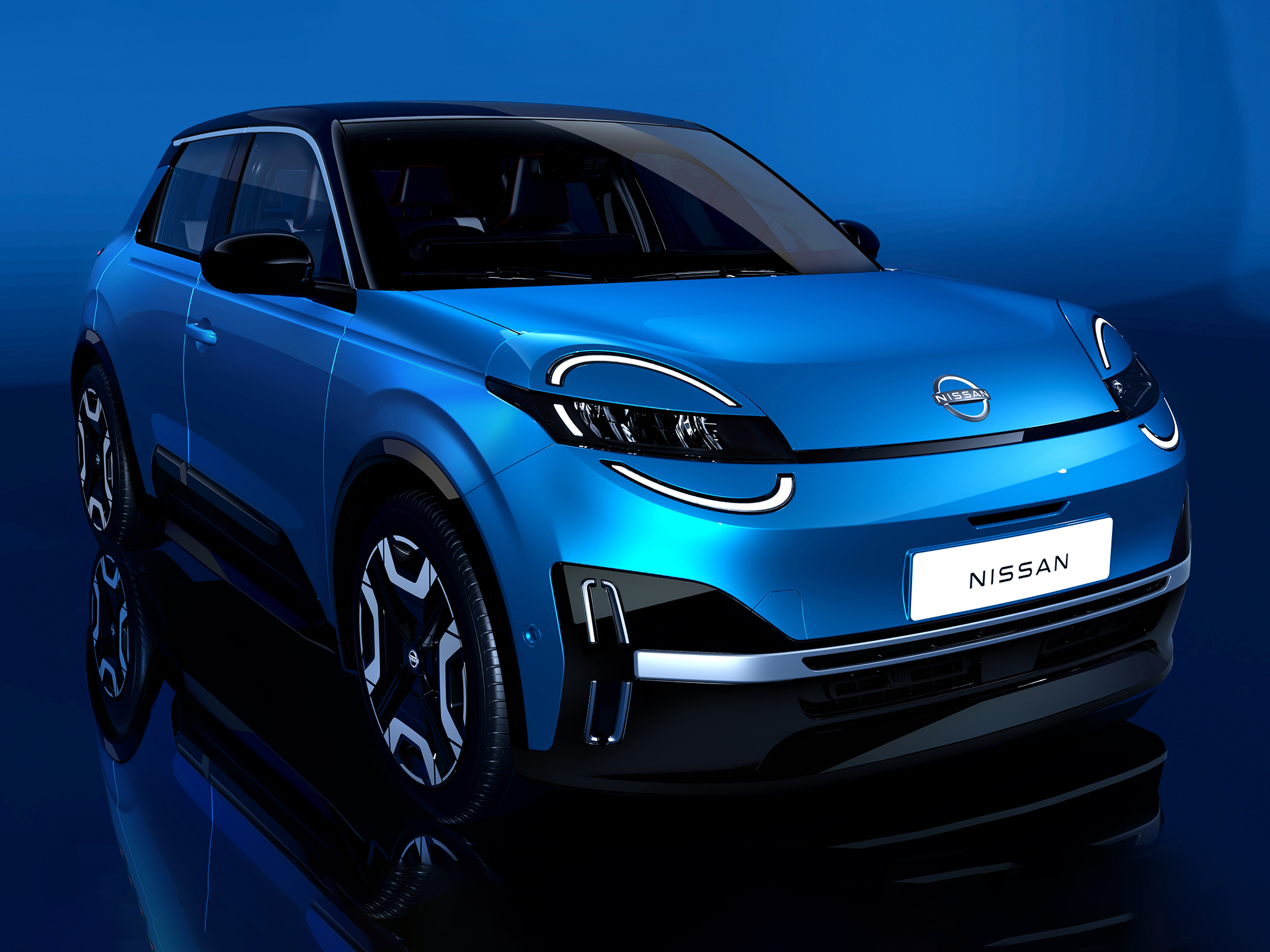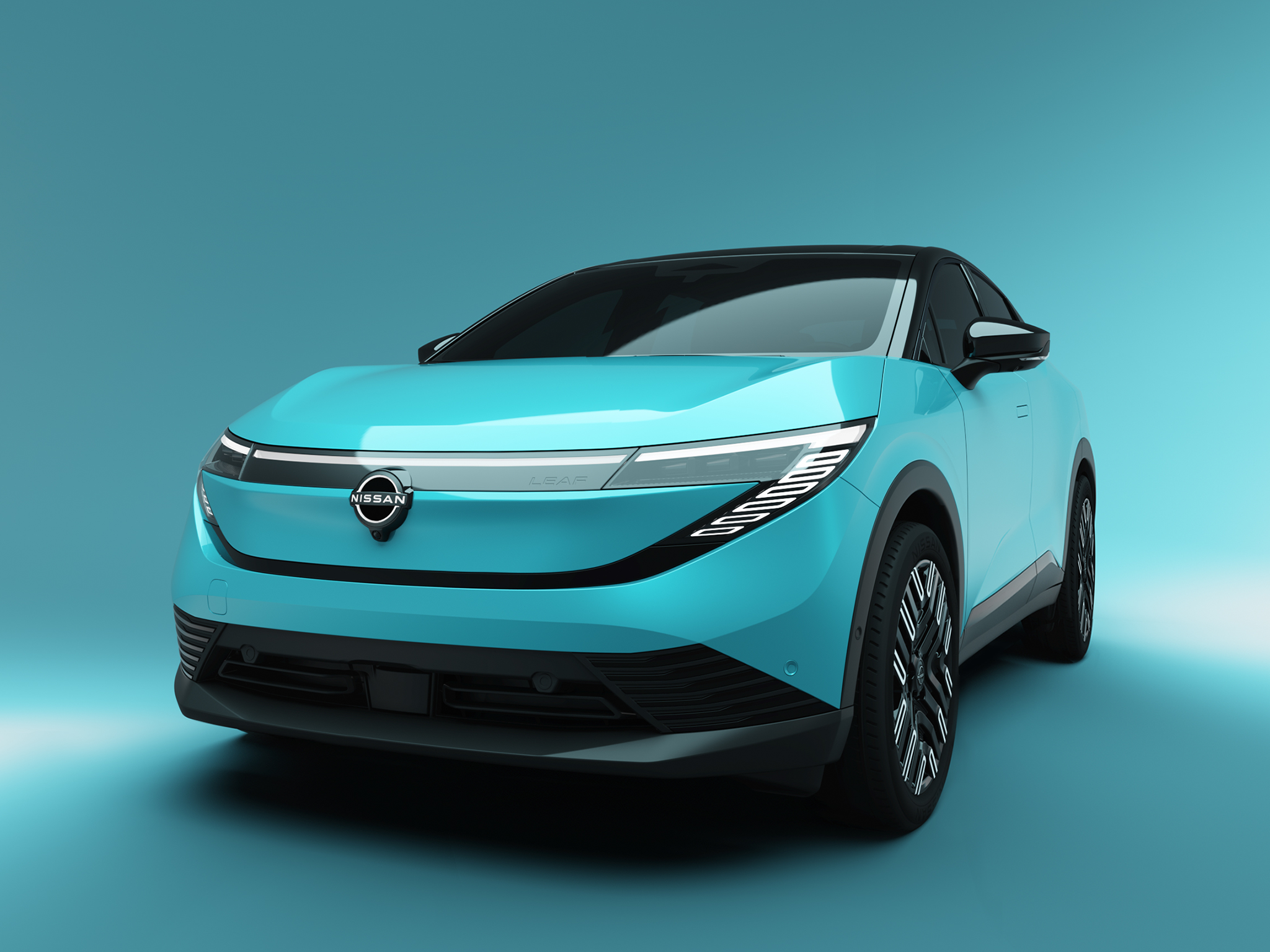
You wait years for a new Nissan EV, then three arrive all at once. The Japanese car maker has revealed new versions of its Micra supermini, British-built Leaf and Juke small SUV. All will be electric powered.
The new Micra will launch first this year, with styling that harks back to the popular curvy Micra K11 model of the early 1990s. The new model was designed at Nissan’s design centre in Paddington, London and features bold, circular daytime running lights that are split by the main headlights at the front to give the new Micra a cute look.
The proportions are very similar to that of the new Renault 5, with which it shares plenty. Nissan is still in an alliance with the French manufacturer. That means that although the Micra was designed in the UK, it will be built alongside the Renault in that company’s factory in Douai, France.
The Micra will use Renault Group’s AmpR Small platform meaning two battery options – 40kWh and 52kWh – with maximum claimed range of over 248 miles for the bigger battery and just under 200 miles for the smaller one. Sales begin before the end of this year.
Also due this year is the third generation Nissan Leaf, which will be built – like its predecessor – in Nissan’s factory in Sunderland. The original Leaf was the world’s first mass-market electric car when it was launched in 2010, with the second-generation car turning up in 2017.

This time the Leaf has been reinvented as a crossover with a sleek front end in keeping with Nissan’s current design theme that also appears on the bigger Ariya electric SUV.
The new Leaf shares more than just its looks with the Ariya, it uses that car’s CMF-EV platform, which is also used for the new Renault Scenic E-Tech. That means similar batteries are likely to be used. In the Ariya there’s a choice of 63kWh battery with a maximum claimed range of 251 miles or a 87kWh battery that will go for 330 miles. In the Scenic, the larger battery achieves a claimed range of 379 miles, which the new Leaf with its smaller, more aerodynamic shape should be able to match.
The arrival of the new Leaf at the plant in Sunderland is part of Nissan’s EV36Zero project aiming to turn the factory into an EV hub, bringing together electric vehicles, renewable energy and battery production.
The third new all-electric Nissan – the new Juke – will also be built in Sunderland. The Juke has been a huge success for Nissan with the current car built in the North East. This is the first time that the car will become all-electric.

The shadowy picture released by Nissan shows that the car will keep the Juke’s familiar proportions with a rising rear window line and stubby rear end. However, it’s expected to grow in size – answering criticism of the current car’s rear legroom – as it’s likely to share the same CMF-EV platform as the new Nissan Leaf.
The design is also said to closely resemble the wacky Hyper Punch concept car shown at the 2023 Tokyo Motor Show, while batteries and potential ranges are likely to mirror that of the new Leaf. The new Juke is expected to go on sale towards the end of 2026.
A new Nissan Qashqai, also expected to be available as a fully electric model, is likely to follow the Leaf and the Juke down the production lines in Sunderland, although not before 2027.
Until then, the Qashqai’s e-Power hybrid system, which uses the car’s engine to power the car through a battery, is being upgraded to improve emissions, efficiency and refinement with the aim of making it closer to the experience of driving a full EV.
Speaking about the new models, David Moss, Nissan’s Senior Vice President, Region Research & Development, AMIEO, said: “As well as welcoming the return of the Micra as an EV and the third generation of our revolutionary Leaf, we’ve made significant steps with one of our most popular technologies. Having reinvented the hybrid with introduction of e-Power by making it quieter and more responsive than a traditional hybrid, the forthcoming updates to e-Power will make it even more efficient, more refined and closer overall to a pure EV-driving experience. It will remain the powertrain of choice for buyers who love the feel of driving electric, but don’t want to recharge.”







